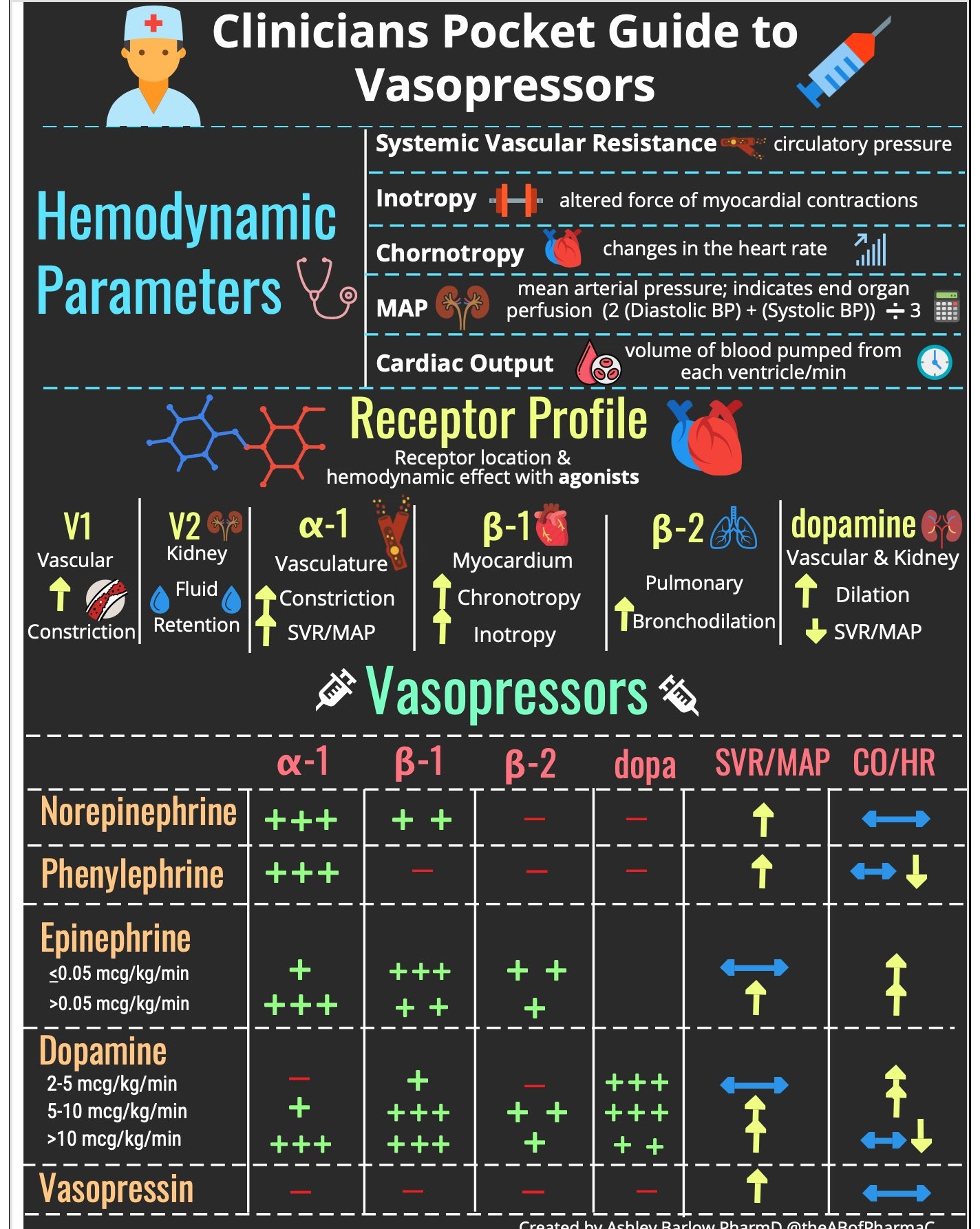Boost Your NCLEX Pharmacology Knowledge with Our Vasopressors and Inotropes Cheat Sheet – Take the First Step towards Nursing Success!
Vasoactive agents can be classified into different categories based on their effects on the body:
- Inotropes: These agents increase the contractility of the heart muscle, which can be helpful in treating conditions such as heart failure or shock. Examples of inotropes include adrenaline, dobutamine, isoprenaline, and ephedrine.
- Vasopressors: These agents cause vasoconstriction, which can help to increase the resistance in the systemic and/or pulmonary blood vessels. This effect can be useful in treating conditions such as low blood pressure or shock. Examples of vasopressors include noradrenaline, vasopressin, metaraminol, vasopressin, and methylene blue.
- Inodilators: These agents have both inotropic and vasodilatory effects, meaning that they increase the contractility of the heart while also causing blood vessels to dilate. This can be helpful in treating conditions such as heart failure or pulmonary hypertension. Examples of inodilators include milrinone and levosimendan.
- Other agents: Some vasoactive agents, such as dopamine, do not fit neatly into these categories and may have a combination of different effects on the body.

Leave a Reply